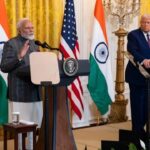Argentina and China have recently renewed their currency swap agreement, extending the activated portion of $5 billion for one more year. This extension aims to bolster Argentina’s foreign reserves and support its central bank amid critical global economic environment.
Here’s a breakdown of the development Argentina’s currency swap agreements with China
- Renewed Swap Line: Argentina and China have extended the $5 billion activated portion of a larger currency swap agreement. It is part of a bigger $18 billion agreement. This can extend for another year.
- Central Bank Confirmation: The Central Bank of Argentina made the announcement on Thursday, stated that the deal was successfully renegotiated.
- Foreign Reserves Support: This comes at a time when Argentina’s foreign currency reserves are critically low. This deal gives Buenos Aires some room to maneuver. It offers some relief during a tough period.
Timeline: Argentina–China Currency Swap Agreements
Since 2009, initial currency swap agreement set to boost trade in local currencies and reduce dependency on the US dollar. Argentina and China signed 70 billion yuan in their first currency swap deal.
2014–2018 — Expansion under Cristina Fernández & Mauricio Macri
Renewed and expanded to $11 billion to used mostly as a reserve buffer, though not always “activated.”
2020 — Expansion to $18 Billion
Under President Alberto Fernández expands the swap line again due to COVID-19 pressures. China extends more generous terms, also marking deeper bilateral ties.
November 2022 — Partial Activation of $5 Billion
Argentina activates a portion to 35 billion yuan due to dwindling reserves. During a major debt crunch. It helped avert balance of payments issues.
June 2023 — Further Activation of Additional $5 Billion
Ongoing worsening FX shortages making situation worse but Argentina and China hit another $5 billion portion activated.
April 2024 – Renewal Confirmed
Now under President Milei, the $5 billion activated portion renewed for a one more year. This seen as a tactical move by the nations to prevent a hard reserve crash during the fuss of reforms.
How It Fits into Milei’s Economic Agenda?
In reuters the monetary authority said in a statement, “The Chinese swap line’s renewal will allow the Argentine central bank to hedge risks as it transitions toward consistent and sustainable monetary and exchange-rate policies amid a tough global environment.”
Short-Term Liquidity for Structural Overhaul
Milei promised big changes like radical liberalization agenda, deregulating market and less government spending. He also wants to cut inflation. The FX swap provides short-term help with money issues without direct borrowing from global bond markets or the IMF.
De-Dollarization Risk Management
While Milei talks of dollar use, but yuan cash helps him now. Yuan liquidity gives him maneuverability amid limited dollar access. The swap deal is a path to calm the economy. It is not a move to using only RMB in the long run.
Geopolitical Balancing Act
While seeking stronger ties with the West and IMF, but still works with China. This avoids angering China as it gets closer to the US, a delicate diplomatic balance.
Read also: Retaliatory Tariffs Suspension on US Goods
IMF Compliance & Signaling
IMF has historically been skeptical of opaque bilateral arrangements, but this renewal probably has hidden IMF approval. The currency swap agreement isn’t new debt. It does help avoid stress on cash reserves, making it IMF-friendly under current conditions.
Conclusion
This development in Argentina–China currency swap agreement reflects Argentina’s strategic efforts to navigate its economic crisis by leveraging international partnerships, while also managing the geopolitical implications of such financial agreements with his moves with swap deal it will not trigger China as it gets closure to US. However, the swap deal is a path to calm the economy









